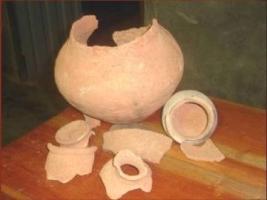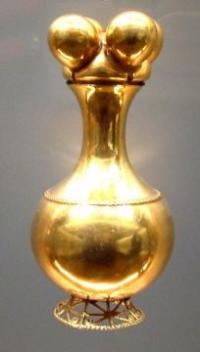Copy Link
Add to Bookmark
Report
Mead Lovers Digest #0820

Subject: Mead Lover's Digest #820, 27 August 2000
From: mead-request@talisman.com
Mead Lover's Digest #820 27 August 2000
Forum for Discussion of Mead Making and Consuming
Dick Dunn, Digest Janitor
Contents:
Re: Mead Lover's Digest #819, 24 August 2000 ("Howard J. Eland")
Re: Mead Lover's Digest #819, 24 August 2000 ("Howard J. Eland")
Re: Royal Jelly (Potgold@aol.com)
Re: Organic Honey (Potgold@aol.com)
Malted oat extract? ("Anthony Torrez")
New American Oak Barrels (bobbylew@ix.netcom.com)
re: Herbal/Medicinal Meads ("Jeff")
alcohol & energy (bobbylew@ix.netcom.com)
Re: Mead Lover's Digest #819, 24 August 2000 (Vicky Rowe)
Re: Mead Lover's Digest #819, 24 August 2000 (Yacko Warner Yacko)
re: The Twilight Zone of Mead ("Brian Lundeen")
Mead Coloring Outside the Lines - Winging It (TPArmantrout@aol.com)
Re: Bentonite vs. diatomaceous earth (Sparkolloid) (dworkin@village.org)
New To Mead ("keithwwyse")
Re: Mead Lover's Digest #819, 24 August 2000 (Elfboy0@aol.com)
Greetings and Mead De-stuckification (long) ("Alson Kemp")
Buffering additives for mead ("Alson Kemp")
PLZ NOTE: This digest is not moderated (Mead Lover's Digest)
NOTE: Digest appears when there is enough material to send one.
Send ONLY articles for the digest to mead@talisman.com.
Use mead-request@talisman.com for [un]subscribe/admin requests.
Digest archives and FAQ are available at www.talisman.com/mead. There is
a searchable MLD archive at hubris.engin.umich.edu/Beer/Threads/Mead
----------------------------------------------------------------------
Subject: Re: Mead Lover's Digest #819, 24 August 2000
From: "Howard J. Eland" <heland@itei.com>
Date: Fri, 25 Aug 2000 01:44:22 -0400
All,
I sent this before, but I think it was during the email meltdown, so
here it is again:
When I'm not stirring up a new brew, and my wife and kids demand things
like money for food and shelter, I run a Web Hosting / Co-lo / Design
biz.
I'd gladly build and host the archive FOR FREE. Anything to help keep
the faith. Please let me know if interested!!!
Howard Eland
------------------------------
Subject: Re: Mead Lover's Digest #819, 24 August 2000
From: "Howard J. Eland" <heland@itei.com>
Date: Fri, 25 Aug 2000 01:53:44 -0400
Dick et. al.
I just tried the archive, and it looks like it's back up, so my services
may not be needed.
Would you like me to mirror this site? Considering the Green & White
Spartan nature of my diploma, would it be allowed?
Howard Eland
------------------------------
Subject: Re: Royal Jelly
From: Potgold@aol.com
Date: Fri, 25 Aug 2000 08:28:01 EDT
> From: "Linda Grant/Matthew Ransom" <spiritflight@kachina.net>
> I'm new to making mead and was wondering if royal jelly is good to add to
> mead. The substance is produced by the young worker bees and is fed to the
> larva from which the queen bee develops and eats through her eight year life
> span (the workers get none and die in two to six months). Royal Jelly
> contains proteins, several types of natural sugars, unsaturated fats,
> enzymes, high levels of pantothenic acid, nucleic acid and vitamin B-6. The
> British royal family uses it for health and longevity. Most health food
> stores carry is in raw form.
Actually royal jelly is fed to ALL brood, just that developing queens get
more of it and for extra time. The royal jelly is not the determiner of the
life span. A bee's wings have about 500 miles in them, after which they are
too frayed to go on. When a bee gets frayed wings she can leave the hive to
forage, but when loaded, she cannot return, so she dies alone. -Sad, but
best for the health of the hive. A worker may fly for only three weeks in
summer before here life is ended, but she may live for six or more months,
thru winter, if she doesn't fly much. The first good spring flight will wear
out a lot of old bees, which sometimes frightens new beekeepers.
The queen only flies to mate, or if the hive swarms later, so her wings
don't have the opportunity to fray, unless mean worker bees chew at her. The
queen that goes with the swarm is usually an old queen; her going with the
swarm seals her own doom, as she will be replaced in the new location within
a few weeks.
The harvesting of royal jelly is extremely labor intensive, so you only
see it produced where wages are extremely low, such as China. To produce it
in significant quantity requires keeping hives queenless, so they produce
many queen cells, then throwing away the queen larvae to harvest their food,
and then starting it over again. Hives normally go thru that cycle once,
when they are accidently deprived of their queen, but they get a new queen
from it. The deliberate use of hives to do this over and over, keeps the bees
in a very bad morale, and will kill a hive, if done for too long. As you can
see, I'm not too fond of the royal jelly thing...
Products of the hive certainly have health benefits. I believe honey and
pollen do help support the immune system in some way. I believe that they
help me and some of my customers with pollen allergies, and I credit honey
with the removal of my sensitivity to poison ivy. I am also asthmatic, and
some foods, especially milk and fresh strawberries can provoke immediate and
violent attacks. Honey/pollen seem to be no help to me here.
Miracle, cure-all nature of the health claims for some hive products,
especially for royal jelly, are ludicrous. And some pollen that is sold is
laced with pesticides. There is a self curative mechanism that protects honey
from pesticides, in that nectar which is poisoned is processed internally.
The worker who does this will die, so poisoned batches are lost from the
total production. Pollen is carried internally back to the hive (in the bees'
pollen baskets), and poisoned pollen is primarily fed to brood and the young
adults that secrete brood food (royal jelly). So pollen contamination has no
significant effect on older bees, or honey, but major effect on brood and
young bees, or to humans, if the pollen is gathered and sold for human
consumption.
Make sure your pollen comes from beekeepers who KNOW the pesticide
practices of the area, or that are produced in areas where pesticides are
simply not used. Such areas in the US might be the Sonoran desert of Arizona,
or the wilderness areas of the Northwest. The higher Appalachians would be
fairly safe from pesticides, but provide little resources for bees, so bees
aren't kept there much. Here in South Carolina I would not dare to collect
pollen, except in the early spring, and that is the time when bees need it
the most, to build up for the season.
The key here is to be knowledgeable. Hype that is produced for the
purpose of selling a product is not to be gullably accepted. Personally I
think royal jelly is one of those products that I don't need nor value as a
human food. Honey and pollen I do, but with a certain amount of
understanding of what they can and cannot do.
Dave Green
The Pollination Home Page: http://pollinator.com
------------------------------
Subject: Re: Organic Honey
From: Potgold@aol.com
Date: Fri, 25 Aug 2000 09:05:49 EDT
From: TPArmantrout@aol.com
> Can anyone tell me if any of the pesticides used in beekeeping filter into
> the honey? Is there really such a thing as organic honey?
>
> Does anyone know of a source of honey that is largely away from
> commercially grown agricultural crops? Is this even possible?
I just commented on part of this in a recent post on royal jelly.
"Organic" is mostly a marketing strategy in the beekeeping world, to get a
higher price for the product. There are a few purists who really do try, but
they often are deluding themselves as to the range the bees fly or are
ignorant of the pesticide usages in the area.
I would be extremely skeptical of an organic label from anywhere east of
the Missisippi, or any agricultural area of the west. In the east, the only
places that would be wild enough to have foraging areas free of pesticides
are also areas where bees will starve, such as the higher Adirondaks or the
Blue Ridge in the southern Appalachians. If you really want honey that is
totally free of any pesticide use in the area, I'd look at "fireweed" which
is a fine honey produced in wilderness areas of the northwest US, and in some
of the desert areas of the southwest, which produce good mesquite/catclaw
acacia/ocotillo honey if the monsoons come.
The key thing with outside use of pesticides, is not that the area is
free of it, but, as I mentioned in the other post, that honey has a
self-cleansing mechanism. Pesticides can be devastating for the bees, but the
loss of the bees that are processing contaminated nectar, means a certain
safety for human consumers.
As to pesticides used by keepers, the beekeeping world changed with the
introduction of the varroa mite. Beekeepers who do not use a pesticide to
control this are almost entirely ex-beekeepers. Varroa is a pervasive pest,
carried by drifting drones and beekeeper migration (necessary for our crop
pollination), and it is so close to 100% fatal to our hives that you can call
it that. While there are experiments going on with resistant strains of
bees, that may yet produce a bee that doesn't need any pesticide help, these
experiments have been pretty so-so, so far. You may find that a few areas in
northern Canada are still free of varroa, and no pesticide use is yet
necessary, but this window is closing fast.
The primary pesticide used for varroa control is used when bees are not
making honey (or it is supposed to be -- so know if your beekeeper is
trustworthy) It is oil/wax soluable, not soluable in water-based liquids, so
it should not be present in honey. There are some who advocate "natural"
chemicals, such as essential oils and formic acid, which often work one
season and not the next. Beekeepers are getting better at controling mites
with IPM methods which reduce total pesticide usage, and beekeepers have a
natural aversion to pesticide use, so the issue is being addressed.
The main point is to know your beekeeper, so you can have some trust in
him/her.
Dave Green
The Pollination Home Page: http://pollinator.com
------------------------------
Subject: Malted oat extract?
From: "Anthony Torrez" <perpacity@hotmail.com>
Date: Fri, 25 Aug 2000 14:24:04 GMT
Does anybody sell Malted oat extract or or at least plain malted oats?
Anyone have any experience with this product?
------------------------------
Subject: New American Oak Barrels
From: bobbylew@ix.netcom.com
Date: Fri, 25 Aug 2000 12:37:11 -0400 (EDT)
Ok now for my questions. Should I do any sort of pre-treatment to blunt the
flavor of the oak or is it ok to just age for a shorter time? How long
should I let the mead stay in the oak for it to pick up a good amount of oak
flavor given the above specifics? How many batches of mead will I have to
do before I can do the bulk of my secondary aging in oak (ie leave it in the
oak for months on end without ending up with oak juice)? Also please feel
free to add any other info you would feel is helpful in the use of oak
barrels.
The traditional barrel used for aging wine is a french Oak Barrel.
The French barrells are kiln dried for 2 years to reduce the oakie or
wood flavor. The origional American made oak barrels were kiln dried
for only 6 months. (that's the main reason why all the critics hated
Californian wine when it was first marketed) I found oak barrels on
the internet 4 years ago for about $450.00 plus international
shipping. American made barrel's used by vintners are now aged
properly, and are 31.5 gallons.
the size is important because one of the attribute of aging is
the gradual oxidation thru the oak walls. As volume changes by a power
of three, surface area changes by a power of 2. Since your barrel is
one sixth the traditional volume (the cube root of six is about 1.82)
it's surface area is only reduced by the square of 1.82, or 3.3. Hence,
assuming the walls are the same thickness (unlikely) oxidation will
occur 1.8 times as fast. There is also an increase in internal surface
area, or 1.8 times as much oak flavor in the mead. (don't let me get
started on the Japanes' failures of reverse engenering vintage wines)
Also, might want to consider, a five gallon barrel is
manufactured for the homebrewer (or amature). I don't know if the
manufacturer decided to cut corners: (ie use thinner or not properly
kilned oak) I'm also not sure how to find out either.
so, for the short way around the barn: Age lightly; too much oak,
or oxidation can't be fixed. too little; hey, it's still mead isn't it.
The barrel will mellow with repeated use. Fill it with water before you
use it the first time to make sure it won't leak. A barrel is air tight
only when the staves are kept moist. Once you start using it, the safest
way to keep it is full. (alcohol is a preservative) If you need to store
it unused, crush some camden tablets in a quart of boiled water and put
that in the barrel. Change the water at least 3 times a year. Always
rinse the barrel immediately after you have emptied your elixer from it.
The first time you use the barrel, the wood is the strongest. It's a
matter of taste, but I would be inclined to use it for an India Pale Ale
first, then when the barrel has mellowed a bit, use it for mead.
Lastly, learn to appreciate Lambics.
Ok now for my questions. Should I do any sort of pre-treatment to blunt the
flavor of the oak or is it ok to just age for a shorter time? How long
should I let the mead stay in the oak for it to pick up a good amount of oak
flavor given the above specifics? How many batches of mead will I have to
do before I can do the bulk of my secondary aging in oak (ie leave it in the
oak for months on end without ending up with oak juice)? Also please feel
free to add any other info you would feel is helpful in the use of oak
barrels
------------------------------
Subject: re: Herbal/Medicinal Meads
From: "Jeff" <gothsqwd@exis.net>
Date: Fri, 25 Aug 2000 12:48:08 -0400
Dick, while your opinion that scientific fact is a much better way to make
decisions may or may not be valid, there is still NO call for belittling
anyone elses honest and serious question or opinion, ESPECIALLY as the
"Janitor" of MLD. While honest disagreement and discussion is the very
heart of MLD, I have never in the three years that I have subscribed to this
newsletter seen anyone make fun of another person's views.
You state that the art and craft of meadmaking is an ancient one. So to are
the arts of divination and healing with crystals and herbs. These things
are at the core of many ancient belief systems which far pre-date our modern
ideas. As for using science, haven't you been following the medical news
over the last few years? These so-called "New-Age bogosities" are being
shown to have scientific validity. I believe that you owe Joshua an apology
for your tone and lack of objectivity. I respect your right to not believe
in the phenomenon, and you should respect his right to believe in it as
well.
Jeff Spurlin
Magick Mead Makers
Newport News VA
"Freedom of religion means ALL religions!"
Dick Dun wrote:
>The art and craft of meadmaking is an ancient one; as such it carries
>lore, mythology, and superstition with it. I think we ought to be able to
>accept and remember those aspects for what they are--no more, no less. I
>also think we ought to be able to use the gift of our own time--which is
>enough science to understand what really goes on in mead and to learn to
>make good mead reliably. It would be a shame if our our generation's
>"contribution" to meadmaking included a bunch of New-Age bogosities.
>...If you
> can't talk with crystals, state your intention for the crystal with the
> crystal in your left hand, and try and get a "feeling" of whether or not it's
> okay.
>What if I'm left-handed? What if the crystal is left-handed (e.g., levro-
>rotatory)? What if I'm in touch with reality and holding a crystal in my
>left hand produces nothing more than the sensation of holding a pretty
rock?
>- ---
>Dick Dunn rcd@talisman.com Hygiene, Colorado USA
> ...Simpler is better.
------------------------------
Subject: alcohol & energy
From: bobbylew@ix.netcom.com
Date: Fri, 25 Aug 2000 13:09:46 -0400 (EDT)
it _is_ possible to produce meads which are
more or less befuddling, and particularly, more or less prone to creating
hangovers. But that is done by control over the higher alcohols produced
during fermentation, _not_ by some mystical "vibrational properties". (Oh
yeah, and "higher" alcohols refers to higher molecular weight, not alcohols
from the astral plane.)
I am curious about alcohols of higher molecular weight.
My understanding is that the consumable kind of alcohol is C2 H5 OH.
There are other kinds of alcohol, but they are considered not drinkable.
I have read several times in the digest about ester alcohols, and alcohols
that become dangerous if concentrated thru distilation, etc. My understanding
has always been that yeast produces the drinkable kind. The kind found in mead
and budweiser, whisky... Is there more than one kind of alcohol in my mead?
Are there other consumable alcohols? just wanted to know.
------------------------------
Subject: Re: Mead Lover's Digest #819, 24 August 2000
From: Vicky Rowe <rcci@mindspring.com>
Date: Fri, 25 Aug 2000 13:52:13 -0400
>
> Subject: re: Herbal/Medicinal Meads
> From: rcd@raven.talisman.com (Dick Dunn)
> Date: 23 Aug 00 11:19:54 MDT (Wed)
>
> regarding [quartz] crystals and mead...
> > I've placed a crystal in with the fermentation several times. The vibrationa
l
> > properties of the crystal were imparted onto the mead, providing a sort of
> > "clear drunk" (how's that for an oxymoron?) experience...
>
> Wheeeeeee!
> I didn't realize we were headed down this path.
This path being what?
> On the reality side of things, it _is_ possible to produce meads which are
> more or less befuddling, and particularly, more or less prone to creating
> hangovers. But that is done by control over the higher alcohols produced
> during fermentation, _not_ by some mystical "vibrational properties". (Oh
> yeah, and "higher" alcohols refers to higher molecular weight, not alcohols
> from the astral plane.)
>
> >...If you are at all consciously sensitive to energy...
>
> wuffa wuffa!
> I believe that anyone who can see, hear, feel temperature,... is
> "consciously sensitive to energy".
>
> > ...A couple of points of caution. The crystal will need recuperation time
> > afterwards, so don't drop it into another batch right after using it. Also,
> > some crystals do *not* like having this done...
>
> woop! woop! woop! woop! woop!
> Most likely is that the crystal is unaffected by the mead (and vice-versa),
> as would be the case with quartz. There is no "recuperation time". The
> other possibility is that the mead would dissolve something out of the
> crystal, in which case it's changed and it's not going to change back.
>
> By the way, folks, crystals are inanimate objects, so they do not "like" or
> "dislike". The particularly ordered molecular structure of a crystal may
> give it some useful properties, but they are not possessed of, or by, any
> vibrational magic, awareness, or active abilities. Crystals are basically
> pretty rocks.
>
> >...I used an amethyst crystal in
> > this way once, without really asking it first. Upon removing it, it was the
> > first time I've ever had a crystal yell at me.
>
> If you are talking to rocks, be sure you have a valid, current poetic
> license.
>
> If you are asking questions of rocks and expecting them to answer you, or
> if rocks are yelling at you, you shouldn't have had that last few glasses
> of mead. If you weren't drinking when this happened, you may be delusion-
> al--a condition that can be dangerous to yourself or those around you.
Dick, was that necessary? Is it so unbelievable that there might be things
which exist that can't be proven with science? Or that science has not yet
discovered everything there is to know?
When you mock others, you only demean yourself. Joshua made a
serious and considered post. Now, he, who came here to ask
questions, just like the rest of us, to learn and perhaps contribute
to the volume of mead knowledge that we all use, may leave. You
don't know what he has to contribute......
Frankly, I am disappointed to see you felt it needful to mock him
in such a manner.
>
> The art and craft of meadmaking is an ancient one; as such it carries
> lore, mythology, and superstition with it. I think we ought to be able to
> accept and remember those aspects for what they are--no more, no less. I
> also think we ought to be able to use the gift of our own time--which is
> enough science to understand what really goes on in mead and to learn to
> make good mead reliably. It would be a shame if our our generation's
> "contribution" to meadmaking included a bunch of New-Age bogosities.
And are you so certain that the 'New-Age bogosities', much of which
is drawn from religions that pre-date Christianity by thousands of
years, is all untrue? I personally feel that mocking another's
beliefs, no matter how odd I may think they are, is a small-minded
and petty thing to do. Much in this world is unknown. We discover
new 'truths' all the time. And we cannot know the 'right' of things
on this side of the veil.
>
> >...If you
> > can't talk with crystals, state your intention for the crystal with the
> > crystal in your left hand, and try and get a "feeling" of whether or not it'
s
> > okay.
>
> What if I'm left-handed? What if the crystal is left-handed (e.g., levro-
> rotatory)? What if I'm in touch with reality and holding a crystal in my
> left hand produces nothing more than the sensation of holding a pretty rock?
Then that is what it does for you. Perhaps it does something else
for him. You can't *know* that it doesn't.
Why not give him a chance?
sadly,
Vicky Rowe
http://www.gotmead.com
------------------------------
Subject: Re: Mead Lover's Digest #819, 24 August 2000
From: Yacko Warner Yacko <yacko@mint.net>
Date: Fri, 25 Aug 2000 14:06:19 -0400
If you've got Royal Jelly to spare, I might advise finding an outlet to
sell it in, which may do you better. I'm sure you can add it to the
mead, but you might be better suited to reap the financial reward of
Royal Jelly. I commands quite a price on the market at this time. It's
not something as valuable as 'bear gall' but it's got quite a following.
j
On Wed, Oct 01, 2036 at 05:12:58AM -0600, mead-request@talisman.com wrote:
> Mead Lover's Digest #819 24 August 2000
> Subject: Royal Jelly, inverted carboys and mead
> From: "Linda Grant/Matthew Ransom" <spiritflight@kachina.net>
> Date: Tue, 22 Aug 2000 17:24:04 -0700
>
> Hey brewers!
>
> I'm new to making mead and was wondering if royal jelly is good to add to
> mead. The substance is produced by the young worker bees and is fed to the
> larva from which the queen bee develops and eats through her eight year life
> span (the workers get none and die in two to six months). Royal Jelly
> contains proteins, several types of natural sugars, unsaturated fats,
> enzymes, high levels of pantothenic acid, nucleic acid and vitamin B-6. The
> British royal family uses it for health and longevity. Most health food
> stores carry is in raw form.
------------------------------
Subject: re: The Twilight Zone of Mead
From: "Brian Lundeen" <blundeen@rrc.mb.ca>
Date: Fri, 25 Aug 2000 17:31:55 -0500
Dick Dunn writes of Elfboy's crystal musings:
> If you are asking questions of rocks and expecting them to
> answer you, or
> if rocks are yelling at you, you shouldn't have had that last
> few glasses
> of mead. If you weren't drinking when this happened, you may
> be delusion-
> al--a condition that can be dangerous to yourself or those around you.
Dick, I can't believe I missed Elfboy's original posting on this, I must
have been especially busy the day I scanned the digest. Just as well, I
probably would have spent hours composing something along the lines of what
you wrote, and it probably would not have been as good.
Now maybe one day science will discover that there are levels of existence
completely outside of our current abilities of perception. Maybe these
crystal-speakers are a quantum leap in evolution, and that we five-sensers
(New-age pejorative) will one day rue our callous mocking of them when the
Great Crystal comes and vibrates us into oblivion. However, until that day,
I prefer not to base my life on the musings of charlatans. Now if we could
just convince a certain group of people that burning bushes don't talk,
either...
Elfboy returns to Earth to feed us the following straight line:
I know a few people that don't agree with Melody's
> assessments of
> crystals' properties,
I think you found a few more here, Joshua. However, I do have some magic
crystals that will improve your fermentations. For only $50/ounce, I will
share them with you. Oh, and when speaking to them, they like to be
addressed as DAP.
And on a related topic, it's not "flying", it's "bouncing around on your ass
like an idiot".
Brian
------------------------------
Subject: Mead Coloring Outside the Lines - Winging It
From: TPArmantrout@aol.com
Date: Fri, 25 Aug 2000 23:43:25 EDT
(I think the original of this letter was lost, I am re-sending it.) Thanks
Joshua, for the info. I was just putting together a very spiced metheglyn
recipe strongly flavored with raisins, cloves, nutmeg, cinnamon, cardamom,
ginger, and allspice -- what a coincidence that your email mentioned Chai.
Very similar I imagine. I will probably use a darker honey (buckwheat?) for
this one. Makes me think of a rich and magical medieval brew. I process my
honey minimally or not at all with great results. The only problem has been
the alcohol. I have gotten one of those mead headaches (from sweet mead) and
they are not fun.
I hoped to put something together that tastes great, leads to a pleasantly
altered state, and has tonic effects on mind/body = a net positive effect. I
know Ayurvedic medicine has some formulas floating around and I think you are
right about the spices in Chai helping to modify the effects of caffeine. (I
know cardamom does.) I had hoped to do something similar as well for
alcohol. (FYI - I have read that nutmeg at sufficient doses has
hallucinagenic/narcotic type properties - but can also have other unpleasant
side-effects. Anyone else find this to be true?)
I remember a reference to crystals, gold, etc., put into meads in the index
of ingredients of (Sir) Digby's recipes. I feel those ayurvedic recipes
contained some of the same things. I will try placing a crystal in my next
batch - I can use the pendulum/dowsing method to find the right one.
For those interested, Chinese medicine has been using ground "rocks"
routinely as part of traditional chinese medicine - well over 3,000 years in
the making. And highly successful. Ground amber, pearl, and hemetite are
some that come to mind. Ditto for Ayurvedic medicine - 6,000 years old, at
least. Of course they were always used as part of a balanced formula that
included other herbs, etc. And by those experienced enough to know how to
use them. Luckily (for me, at least), I do have some background in herbs and
access to TCM doctors.
Alchemy comes to mind when doing this stuff. An artist/alchemist uses all
available materials at his/her disposal. Not just the ones sanctioned by
"contemporary western science." Be adventurous. But it also pays to be
aware and a little cautious - research is important, too. Ultimately, I
decide what I will use or not. That is half the fun of creation. As we all
know, even with the best recipes, you are never exactly sure what you are
going to get till you open that first bottle. That's the other half of the
fun- if you can wait that long. Keep me informed about your progress,
Joshua. I would imagine that any such brew would require at least a year to
age properly??
Tim
PS Addendum- J- I have had time to look over the archives and found your
recipe for Chai mead. I'd really like to know how it is going. Also, FYI -
there is an Ayurvedic tonic/herbal jam called Chyvanprash(sp?) (website:
ayur-veda.com) that is the mother of all tonic formulas. It uses these same
herbs plus many others. I wonder if I might be trying to make an alcoholic
version?
Has anyone ever added bee pollen to their brews?
T
------------------------------
Subject: Re: Bentonite vs. diatomaceous earth (Sparkolloid)
From: dworkin@village.org
Date: Fri, 25 Aug 2000 21:54:00 -0600
"Grant Knechtel" <GWK@hartcrowser.com> wrote:
: Have never used Sparkolloid, but bentonite is a clay and
: diatomaceous earth is opaline silica.
Hmm. Kinda ties back into the "crystals in mead" thread, doesn't it?
: This means they will strip particles with opposite charges from
: the mead, beer or wine being fined. Bottom line: use them for
: differing tasks.
Thanks for spelling this out so succintly. I'm sure the details of
polarity have been mentioned before, but I don't believe both ever
appeared in one posting. Now I have something to refer back to....
Is there a simple rule of thumb for the polarities of various things
that are typically not wanted left in suspension? I'm specifically
curious about yeast and fruit bits at the moment, but just about
anything that gets discussed here is of interest (spices, herbs,
lettuce...).
: What i have done successfully is using a wire whisk, add small amounts
: bentonite to water, whisking in each bit before adding more, much as
: one would do adding flour to liquid. When all the bentonite is added,
: boil. When the boiling slurry gets too thick add more water. When
The boiling being purely for sterilization, correct? I interpret this
as saying the dissolving should be possible at room temperature, given
sufficient time and stirring. Somehow, the thought that the problem
has been impatience on my part is not too surprising.
Thanks much.
Dworkin
------------------------------
Subject: New To Mead
From: "keithwwyse" <keithwwyse@ukonline.co.uk>
Date: Sat, 26 Aug 2000 11:34:59 +0100
Hello all. I'd like to introduce myself, as I have
only recently subscribed to the digest.
My name is Keith Wyse, and I live in Edinburgh, Scotland.
My job in a financial company is not worth even this
mention. My house is a fair sized one in Britain, with
quite a bit of spare room for my interests, such as
brewing. Temperature control with our climate is the
problem.
I first learned of mead through a television show
called Food & Drink, which gave a very basic recipe
(some times best). Luckily I have found the Cat's Meow
(and figured out why it is called that), and decided
making mead is much more fun than trailing down to
the Off License (Liqor Store) or bar. I can remember my Dad,
Walter, making wine when I was quite young, so I hope
I am upholding a family tradition.
Previously I had tried some beer & lager brew as well
as high alcohol liqueur brews, such as Peach Schnapps,
but this turned out to be quite yeasty, and not very much
like the store bought version.
My first batch was just the basic recipe, straight
diluted fermented honey with generic wine yeast in a
five litre plastic bottle, and my family agreed it was
quite good for a first attempt.
My second batch is still going after about two months,
again basic recipe, but I have fears for its quality.
I also found out one of the reasons for heating, sometimes
to boiling, a must before cooling and pitching. Yeast
is an anaerobic fungus, it doesn't agree well with
oxygen, and the boiling like when making clear ice
cubes drives off must of the oxygen dissolved in the
must. Other reasons I can think of are that it will
pasteurise the must and drive off certain unwanted flavours or
chemicals. Can anyone think of others (ideally talking of a
basic recipe, rather than boiling for a specific ingredient)
I wonder if there are any other Scots or Brits subscribed
to your mail list, particularly in Edinburgh? And if
so are there gatherings I could attend? Please contact
me on my email address above. (I am currently looking
into membership of the Craft Brewing Association).
Merry brewing & drinking!
Keith
------------------------------
Subject: Re: Mead Lover's Digest #819, 24 August 2000
From: Elfboy0@aol.com
Date: Sat, 26 Aug 2000 07:28:38 EDT
I will be surprised if this article is permitted into the digest, although
given the totally uncalled for ridicule by both Dick Dunn and (to a lesser
degree) Richard Scholz, I think I deserve at least a little leeway.
Certainly, my attempt is to maintain more relevance to the purposes of this
digest.
My impression was that the purpose of the MLD was to share information that
has some relevance to mead making (and occasionally to discuss the list
itself). In discussing the use of crystals, I am doing just that. There is
obviously some interest in the subject on the list - someone else brought it
up, and several people e-mailed me after my initial comments (hence me
posting the book recommendation). Certain people have brought up safety
issues concerning their use, and it seems those people are also contributing
to MLD's purpose.
What does *not* seem (to me) to contribute to this purpose is ridiculing
someone for their "beliefs" or experiences. Dick, you yourself have rejected
at least one article on the basis of you thinking it was too "inflammatory" -
I can only assume this has happened more than once. The article you posted,
as well as Richard's, are obviously *intended* to be inflammatory, and are
certainly far worse than what you rejected (the author sent it directly to
me, since it was a reply to a post of mine anyway). I think the entire
population of the list would appreciate a more consistent policy, especially
where your *own* posts are concerned.
This is now the second time I have seen you (Dick) trash metaphysical topics
on this list (the first time was far less "inflammatory"). There are far more
people than I think you realize that accept metaphysical ideas, but most of
them keep quiet about it because the response is often attacks of ridicule
like the two of you just made. It would be a shame if our generation's
"contribution" to meadmaking included misusing science to justify ridiculing
and being intolerant of views and experiences different from our own.
Both of you claim the support of science, yet your attitude, and your claim,
is extremely unscientific. Science can neither prove nor disprove such
things, and science certainly does not attempt to say "things that are
unprovable do not exist." Just because metaphysical occurrences are "not
reproducibly detectable by any know [sic] physical method" (btw, an
inaccurate statement) does not mean they *must* not exist. Science is still
trying to formulate a grand unification theory which involves more than four
dimensions. Science is still not able to tell us from where consciousness
arises, much less what dimensions it can access. As far as I'm aware, science
is limited to detecting things in four-dimensional space-time, and even
*that* is limited, as provable by Heisenberg or application of chaos theory.
It is quite possible, therefore, that consciousness is related to 5 or more
dimensions, can *access* these dimensions, and that many or all things
metaphysical are related to dimensions outside the four currently accessible
by science. What I find especially interesting is that some of the recent
unification theories describe the underlying pattern of the universe as a
grid or "weave", language very similar to "tapestry", which is how shamans
have described the universe for thousands of years. Personally, I believe
that a grand unification theory will ultimately incorporate consciousness,
metaphysics, mysticism, magic, whatever you want to call it, but this will
only come by exploring and accepting the limitations of *both* systems.
But I shouldn't have to attempt an updated rewrite of "A Brief History In
Time" every time I want to discuss putting rocks in my mead.
The point is, I don't claim to "know" for sure, any more than you can claim
for sure to "know" these things don't exist. And that's why a digest like
this has life. If mead making, or *anything* in life, was simply a matter of
following formulae, all we would need are "how to" lists. Instead, we are all
on this list to share one another's *experiences*. As I said eight months
ago, I would be extremely naive to dismiss the experiences I've had as
coincidental, indicative of lacking in sanity, or being out of touch with
reality. In fact, most people that know me would say that I'm far more stable
and functional than I was eight years ago when I first started consciously
having such experiences. That's what this list is about - sharing experiences
that we have found to work. We can certainly question such experiences,
perhaps even go so far as to disagree with them. Can we please do it without
the ridicule?
- Joshua
------------------------------
Subject: Greetings and Mead De-stuckification (long)
From: "Alson Kemp" <akemp@tripath.com>
Date: Sun, 27 Aug 2000 10:31:10 -0700
Greetings y'all. I just joined the list. I'm a novice mead maker (I've
tried to make mead once before, but got too busy, forgot about the carboy
and the mead went bad. Long story...). I've made a new batch and it's
doin' fine. I was discussing why I make mead with my wife and I realized
that I've never had mead and I don't really know what it tastes like. But
it's so much harder to make than beer and I'm in it for the challenge.
There's a lot of discussion about stuck fermentation, how to keep the
mead fermenting strongly, etc. I thought that I'd share my recent
experience with a stuck mead.
I made a basic mead with about 12# of honey for 5 gallons of mead.
Couple teaspoons of DAP and a couple teaspoons of yeast nutrient. Distilled
water (not a whole lot of nutrients there...). Used White Labs Pitchable
Sweet Mead Yeast. Started it with some sugar, DAP and yeast hulls 2 days
before I made the mead. Heated the honey and water to 150F and held it
there for 10 minutes or so. Put 2 gallons of cool water into a carboy and
added the heated must. Topped up to 5 gallons. Waited till it had cooled
off and pitched the yeast. Yeast (which was doing great in the starter) did
great in the mead. Bubbling a lot. All is happy.
A week later, bubbling had slowed a lot. Nervous. A couple of days
later, bubbles were barely rising through the mead. I had read about how
mead could be made to finish the primary fermentation in less than a month
and this mead was NOT going to do that. I was not in the mood for a 6 month
primary fermentation. I'm impatient (and I brew mead?!). I tested the acid
and it was 0.35%. That seemed about right, but what was the PH? Didn't
have a kit, so I went and bought one ($9). 4ml of mead + 1 drop of
indicator gives a VERY bright easy to read color. The PH of the must was
>>2.5<< (or so, between 2 and 3)!!! So I added 1.5 teaspoons of CaCO3
(calcium carbonate, chalk). Much fizzing. I haven't tested the new PH,
yet, but 2 days after adding the CaCO3, fermentation is going very strong.
I'm going to try to get the PH up to 4.
I don't know a whole lot about mead and fermentation, but if you're
going to make mead and you're not an expert or experienced, go get a PH test
kit or PH test papers. I wish wish wish that I had done that long ago. Lab
supply stores have PH test kits, some homebrew supply stores have them,
order them off of the web, whatever. Get one. You have a hydrometer and,
as far as I'm concerned, a PH test kit is just as critical...
Yeast can be very sensitive to PH and honey is unbuffered, so the PH can
drop very quickly. Slow or stuck fermentations are probably very often
caused by low PH. Adding acid blend before the primary fermentation will
only exacerbate the problem (unless the solution is buffered to oppose the
addition of acid).
No crystals were harmed during the composition of this message,
Alson Kemp
------------------------------
Subject: Buffering additives for mead
From: "Alson Kemp" <akemp@tripath.com>
Date: Sun, 27 Aug 2000 10:54:03 -0700
Y'all,
I just posted a long post about my experiences with mead PH. I wanted
to continue on the train of thought but didn't want to make that post any
longer. This post is related to the previous post but was separated to
create a new clean post thread.
In the previous post, I talked about buffering mead with CaCO3 (calcium
carbonate, chalk). It worked well. When I picked it up from the homebrew
store (Fermentation Frenzy in Los Altos, CA, good place, nice owner, give
him money), I told the proprietor about my possible PH problem and how I was
going to buffer the mead using the CaCO3. He said that he had done the same
with mead or wine, but that 1) CaCO3 had added a chalky taste, 2) it never
really cleared. Thoughts?
So, in the future, if I'm going to buffer my mead, what do I buffer it
with? There are some common buffering agents: CaCO3, KaCO3. What other
ones are there? I can't seem to find KaCO3, though I think Fermentation
Frenzy has some.
I assume that each buffering agent has its own taste, so what do the
various buffering agents taste like? If acid "blends" are added, should I
add a buffering "blend"?
Incidentally, the information about PH and buffering, although VERY
important to mead making, is rarely mentioned in mead books or FAQs.
Party on,
Alson
------------------------------
Subject: PLZ NOTE: This digest is not moderated
From: mead@raven.talisman.com (Mead Lover's Digest)
Date: 27 Aug 00 15:51:40 MDT (Sun)
The MLD is not moderated and never has been.
In response to some private comments I've received, I would like to remind
everyone that the Mead-Lover's Digest is not moderated. The reason that I
call myself a "janitor" rather than a "moderator" is that I consider it my
job to clean out the garbage and keep the digest running, but explicitly
NOT to exercise editorial control. ("Garbage" in the preceding means
things like spam, mailer bounce-back messages, and misdirected admin
requests--stuff that is not, and was never intended by anyone to be, sub-
missions to the digest.)
I have in the past attempted to be a bit more conscious, as it were, in
catching stuff that was somehow off-base--such as announcements of events
already past by the time the digest would appear, or mail obviously
intended for me rather than the digest, or once a technique which was
potentially dangerous. That last, however, proves it to be a slippery
slope for me and a point of suspicion for subscribers who don't trust
me, so I've stepped away from it.
I do continue to filter out spam and other misdirected mail, bounce msgs,
obvious advertising, and subscribe/unsubscribe requests. I filter out
messages that have no mead content (judged on mechanical criteria)
whatsoever. I filter out vacation-mail noise IF I can catch it. That's
about it.
- ---
Mead-Lover's Digest mead-request@talisman.com
Dick Dunn, Digest Janitor Boulder County, Colorado USA
------------------------------
End of Mead Lover's Digest #820
*******************************

























